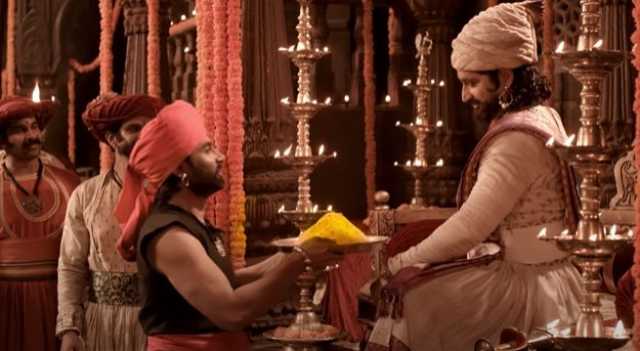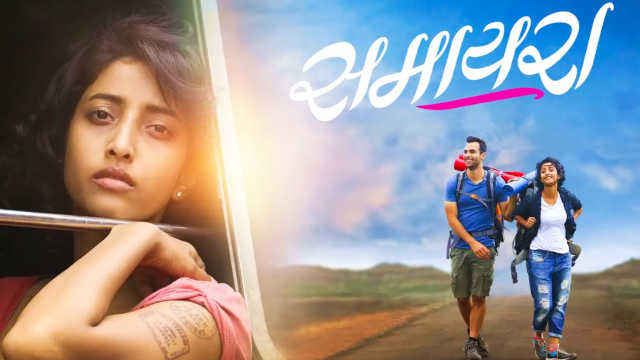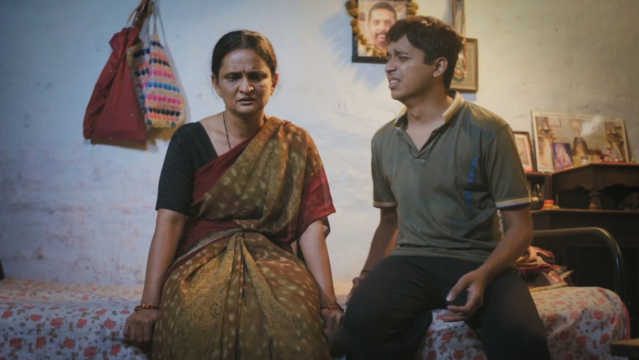
Shriram Iyengar
Mumbai, 18 Feb 2022 15:02 IST
Digpal Lanjekar's third film on Maratha history successfully blends traditional Marathi folk tradition, legends and historical essence to create a cinema unique to the region and its people.

Indian cinema has roots deep in folk theatre. Folktales are not often true to the source, but their purpose is not to distort. They mean to serve up the tale according to the palate of the audience. The drama, speed and style of the story will vary from village to village.
Digpal Lanjekar's recent films on Maratha history tap into this very tradition. These stories have changed form so many times that it is no longer easy to separate fact and legend.
A close comparison would be Zack Snyder's 300 (2006), which similarly dramatized history to devastating cinematic effect. It would be naive to consider this accurate history, but it would be even more foolish to ignore the power of the cultural stamp the form carries.

Pawankhind tells the story of the brave last stand of Senapati Baji Prabhu and his 300-strong Bandal army which defended the Ghodkhind (later renamed Pawankhind) valley between Panhalgad and Vishalgad near Kolhapur in Maharashtra on 13 July 1660.
Having conquered the fort of Panhala, the Maratha warrior Shivaji (Chinmay Mandlekar) finds himself facing a double assault. Even as the Adilshahi sultanate dispatches Siddi Johar (Sameer Dharmadhikari) to lay siege to the massive fort, the Mughals despatch Shaista Khan for a campaign in the Deccan.
With no way out, Shivaji decides to break through the siege somehow and reach the safety of Vishalgad. This would involve trickery, courage, sacrifice and a lot of planning.
Period epics are all the vogue in Indian cinema, but Lanjekar uses several elements of folk storytelling, like the narrator (Shivaji himself here), musical expositions of the events, and a steady flow of heightened drama and tension to keep you engrossed in the tale. The use of Bahirji Naik as the spymaster and the musical exposition using the 'lok geet' form to explain the plan to audiences is brilliant.

This is done with a plethora of colourful characters, each with a distinct personality and appeal. Ajay Purkar is royal and stout as the brave Baji Prabhu Deshpande. His presence overpowers everyone in the end. Ankit Mohan as the six-pack-sporting Rayaji brings attitude and action.
The film seems to be setting up a Maratha cinematic universe akin to the Marvel Cinematic Universe with Chinmay Mandlekar as the regal Shivaji, Mrunmayee Deshpande as Jijamata, and Harish Dudhade as Bahirji Naik reprising their roles from Fatteshikast (2019). Dudhade deserves praise for his portrayal of the underrated Naik, a master of disguise, as the playful, streetsmart commander finding his way out of traps.
Even Sameer Dharmadhikari returns as the villainous Siddi Johar. The actor gives the Siddi a commanding presence and a scheming intelligence. Lanjekar allows this growth and it serves well to enhance the bravery of the final sacrifice. A good villain is essential for a great hero.
Shivraj Waichal, Sachin Bhilare and Ajinkya Nanaware portray other key players whose contribution receives just praise in the film. The women, led by Mrunmayee Deshpande, form the emotional core of the story. Their presence keeps the testosterone in the film from boiling over, though it still is heavy with machismo.
The blend of action, the romantic legend and the folk roots make the storytelling compelling. It is not without visual grandeur. The scenes shot at the forts, the visuals of the Marathas running through the forest, and the battle sequences are compelling.
Lanjekar's film also benefits from attention to detail. Historical facts merged seamlessly into the folk retelling, the recounting of strategies, the use of local dialect and a mention of key names in each battle give it an authenticity that period films in Hindi cinema lack. They either overdo the facts or overdo the entertainment. Lanjekar seems to be finding the balance here.
Of course, the drama is heightened. It is important to remember that the film feels coloured by a majoritarian bias. Yet, that was always the style of folk dramatists. They could change the tone to suit the audience. Cinema can claim to be no different. There are moments in the final action sequence when the VFX glitches are visible, but they do not hinder the story in any way.

Pawankhind feels like a progression from Farzand (2018) and Fatteshikast (2019) which started this cinematic trilogy. With a lot more stories and a lot more legendary tales embedded in Maratha history, Lanjekar certainly has the opportunity of creating a cinematic universe.
Pawankhind was released in theatres on 18 February 2022.
You might also like

Review Marathi
Samaira review: This well-intentioned travel drama suffers from a dull script
Actor Rishi Deshpande's directorial debut doesn't rise as much as its performances. ...

Review Marathi
Goshta Arjunchi review: Triggering conversations about mental health
Anupam Barve’s short film urges people to talk to their families about what they are going...

Review Marathi
Ekda Kaay Zala review: Sumeet Raghvan impresses in a film that does not use its full potential
Directed by Dr Saleel Kulkarni, the film has a fine act by child artiste Arjun Purnapatre....

